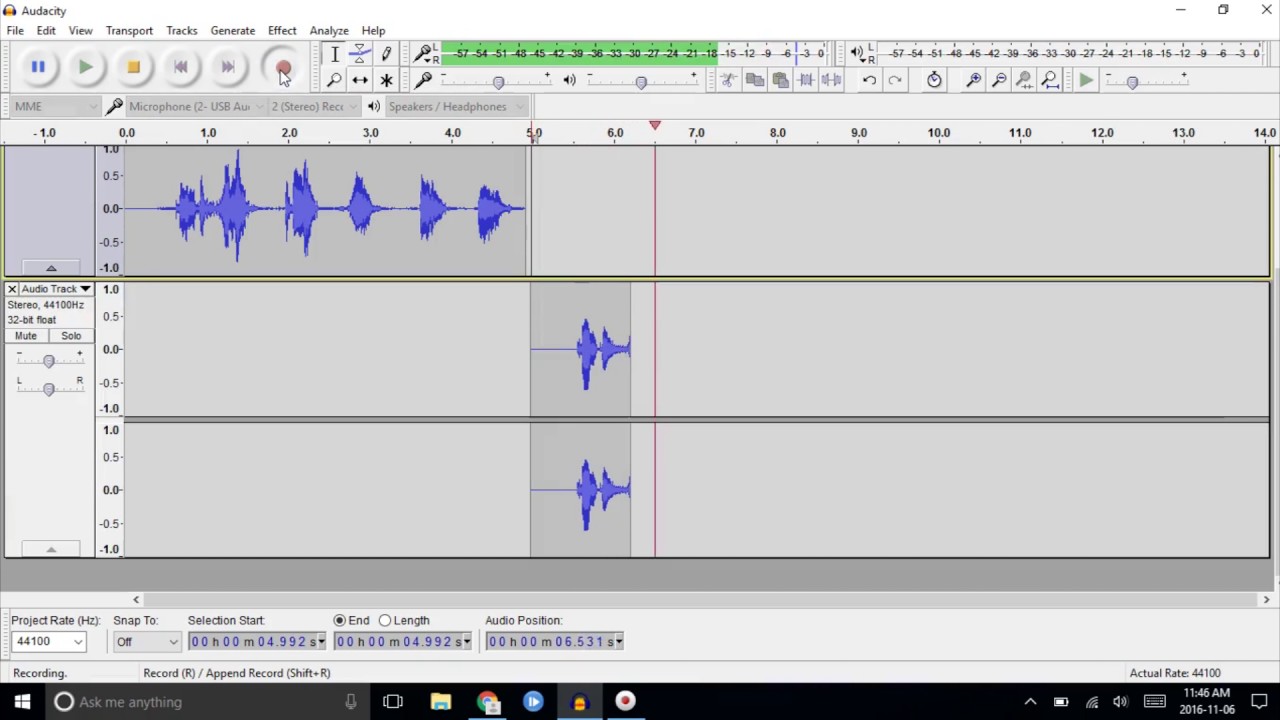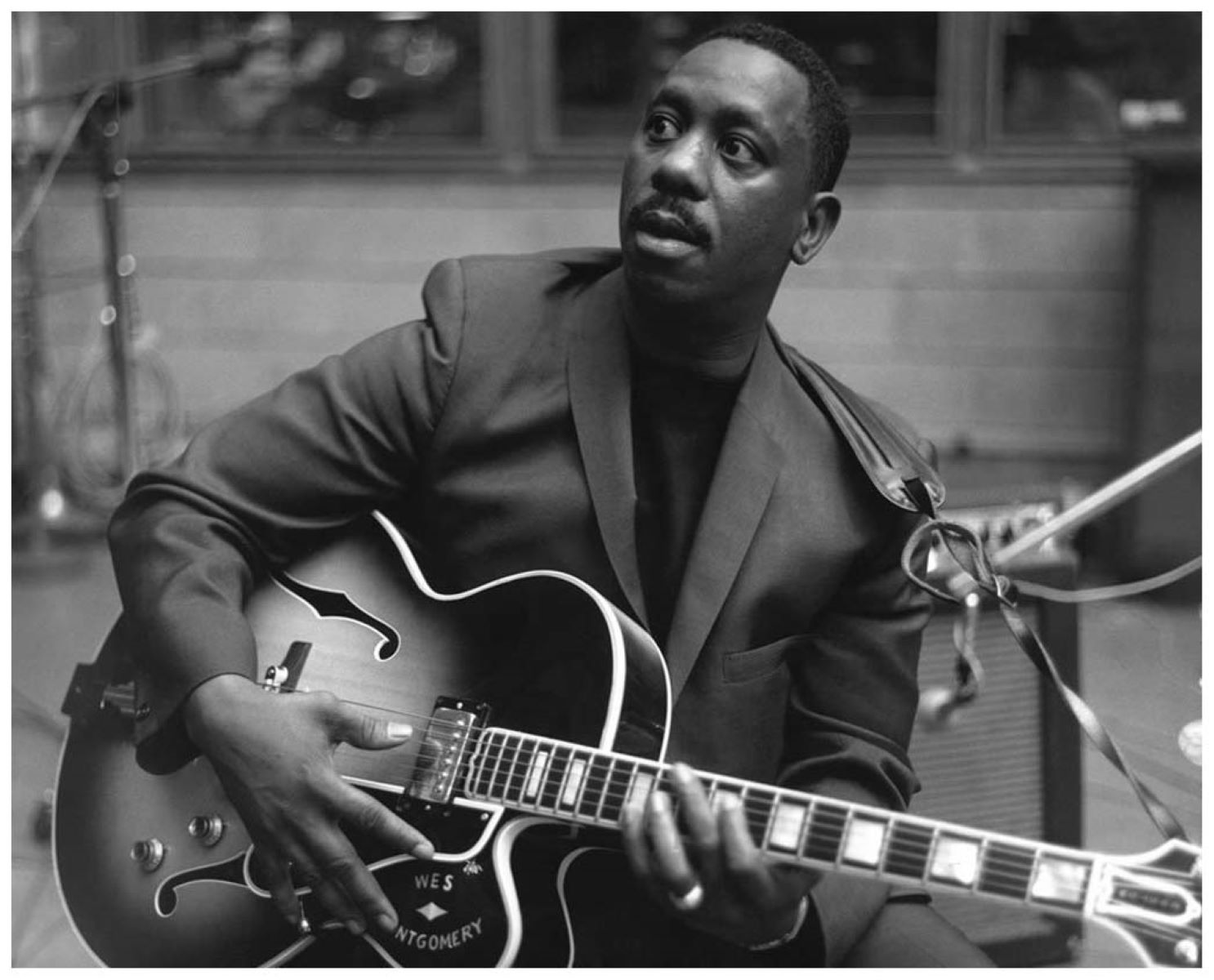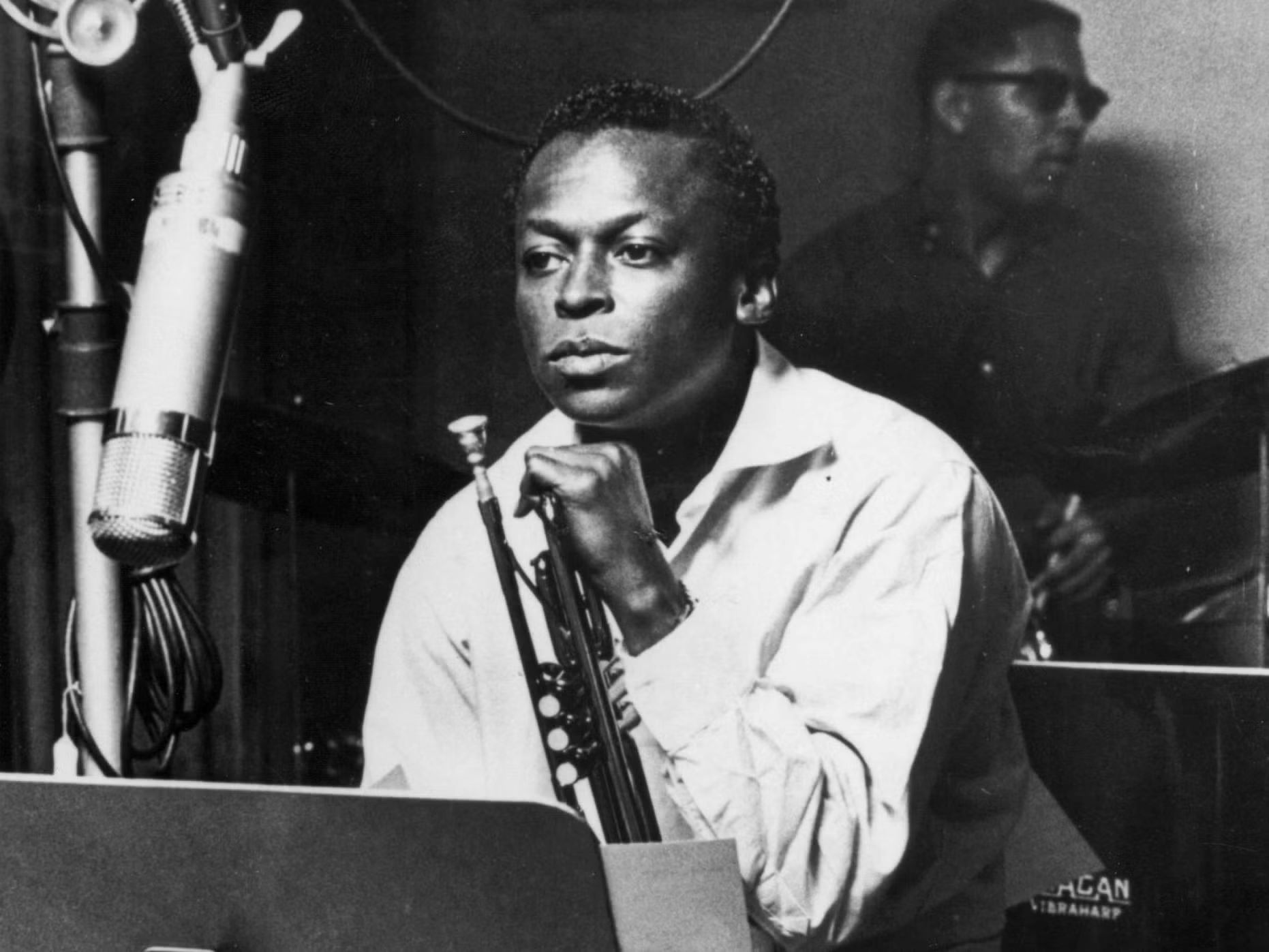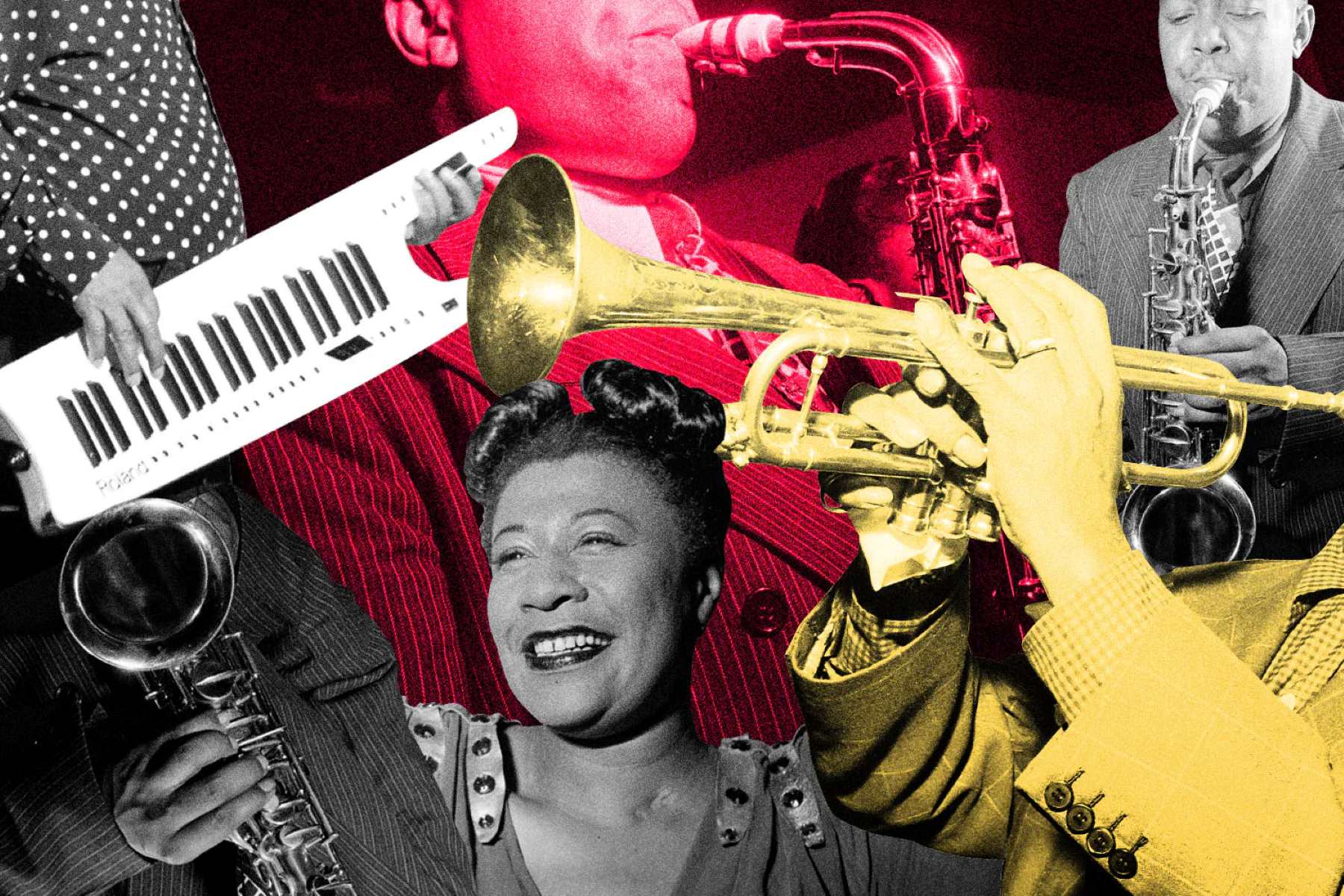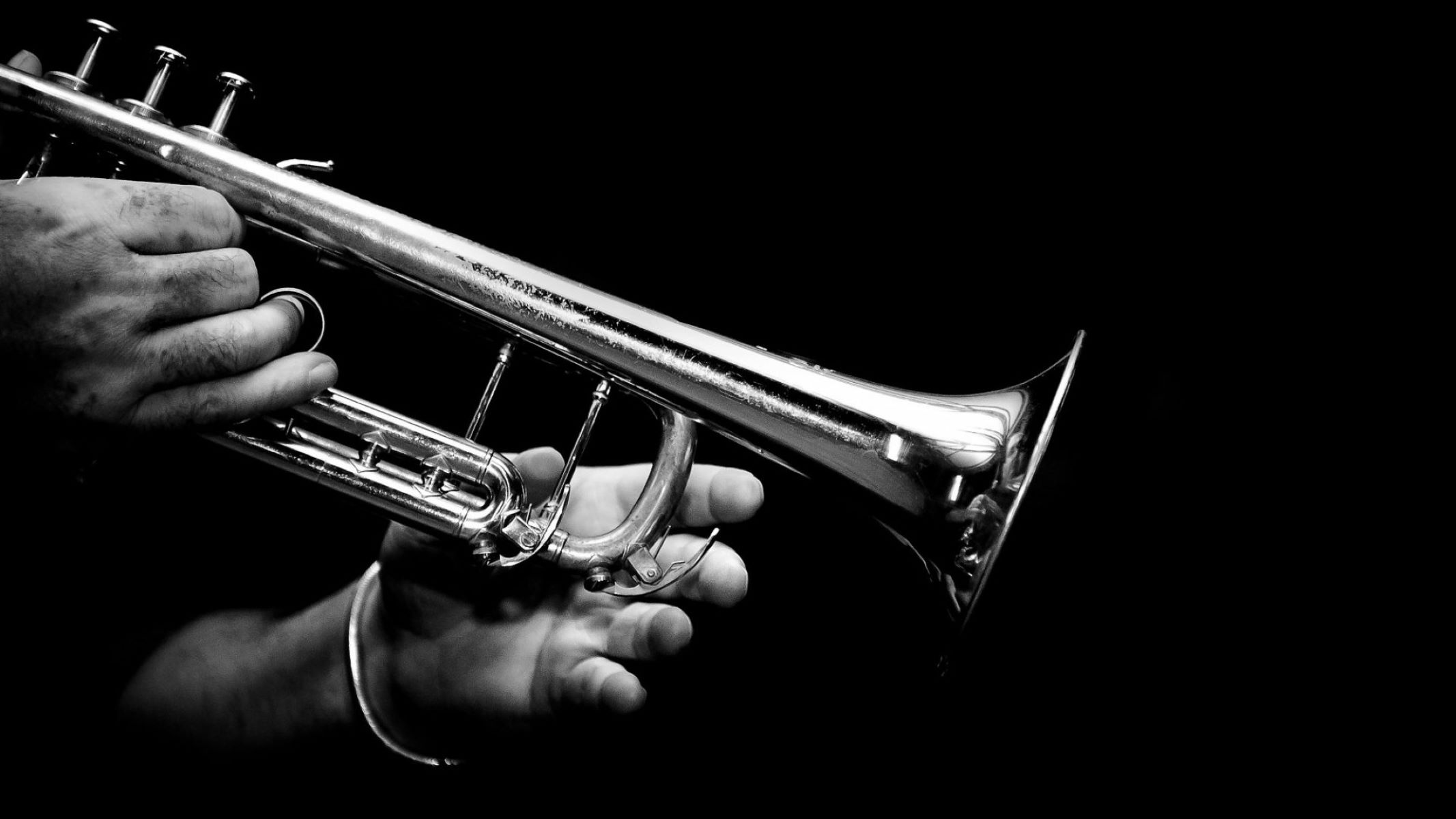

Jazz
Who Listens To Jazz
Modified: January 22, 2024
Discover who listens to jazz and why this timeless genre continues to captivate audiences. Find out how jazz is enjoyed by music enthusiasts around the world.
(Many of the links in this article redirect to a specific reviewed product. Your purchase of these products through affiliate links helps to generate commission for AudioLover.com, at no extra cost. Learn more)
Table of Contents
Introduction
Jazz, a genre known for its improvisation, soulful melodies, and complex harmonies, has a rich history that spans over a century. Originating in the African American communities of New Orleans in the late 19th and early 20th centuries, jazz quickly became an integral part of American music culture, spreading its influence to all corners of the globe.
With its roots in ragtime, blues, and African rhythms, jazz emerged as a revolutionary genre that embodied the spirit of freedom, individual expression, and innovation. From its humble beginnings in the dance-halls and brothels of New Orleans, jazz evolved and diversified, giving rise to various sub-genres such as swing, bebop, cool jazz, and fusion.
What sets jazz apart from other genres is its fluidity and adaptability. Jazz musicians are known for their skillful improvisation, seamlessly blending elements of different styles and creating unique interpretations of familiar tunes. This improvisational nature of jazz not only allows musicians to express their creativity but also makes each performance a one-of-a-kind experience for the audience.
Over the years, jazz has gained a massive following across different generations and has become a cultural phenomenon embraced by music lovers of all backgrounds. From its early days as a soundtrack for the jazz age of the 1920s and 30s, to its resurgence during the bebop era of the 1940s and 50s, and its continued popularity in modern times, jazz continues to captivate and inspire listeners.
In this article, we will delve into the world of jazz, exploring its origins, its cultural impact, its diverse audience, and its influence on other genres. So, sit back, relax, and let’s dive into the mesmerizing world of jazz.
The Origins of Jazz
The roots of jazz can be traced back to the vibrant melting pot of cultures in New Orleans, Louisiana, in the late 19th and early 20th centuries. The city’s unique blend of African, European, and Caribbean influences gave birth to a new form of musical expression that would eventually be called jazz.
One of the key factors in the development of jazz was the interaction between African and European musical traditions. African slaves brought with them a rich tradition of music characterized by complex rhythms, call-and-response patterns, and distinctive vocal styles. European settlers, on the other hand, introduced instruments like the piano, trumpet, and saxophone. The fusion of these musical traditions created a unique sound that would define jazz.
The early forms of jazz emerged from the African American communities in New Orleans. Musicians would gather in the neighborhood of Storyville, which was known for its vibrant nightlife and lively music scene. They would perform in dance halls, brothels, and street parades, creating a lively and energetic atmosphere.
Ragtime, a syncopated style of music that was popular at the turn of the 20th century, played a significant role in the development of jazz. Influenced by African rhythms and European musical structures, ragtime served as a bridge between the traditional African music and the emerging jazz sound. Pioneers like Scott Joplin popularized this genre and laid the foundation for future jazz musicians.
Another important element in the birth of jazz was the concept of improvisation. Jazz musicians would often deviate from the written melody and chords, adding their own embellishments and variations. This improvisational approach allowed for personal expression and innovation, giving each performance a distinct and unpredictable quality.
New Orleans jazz, also known as Dixieland jazz, emerged as the first recognized form of jazz. It featured a front line of brass instruments, such as cornet, trumpet, and trombone, playing improvised melodies over a rhythm section comprised of piano, banjo, bass, and drums. Prominent early jazz musicians from New Orleans include Louis Armstrong, Jelly Roll Morton, and King Oliver.
As jazz spread beyond New Orleans to other cities like Chicago, New York, and Kansas City, it underwent further evolution and diversification. The swing era of the 1930s and 40s brought in big bands, led by bandleaders such as Duke Ellington and Count Basie, and introduced a more polished and orchestrated sound.
Overall, the origins of jazz can be attributed to the fusion of African and European musical traditions, the influence of ragtime, and the concept of improvisation. These elements laid the groundwork for a new genre of music that continues to captivate audiences around the world.
Jazz as a Popular Genre
Throughout its history, jazz has remained a popular genre, beloved by music enthusiasts around the world. Its unique blend of improvisation, complex harmonies, and rhythmic variations has captured the hearts and ears of listeners from all backgrounds.
During the early 20th century, jazz quickly became the soundtrack of the Jazz Age, also known as the Roaring Twenties. The lively and energetic nature of jazz perfectly reflected the spirit of the age, characterized by social freedoms, economic prosperity, and a desire for self-expression. Jazz clubs and dance halls were filled with people eager to enjoy the infectious rhythms and exhilarating performances of jazz musicians.
As the popularity of jazz grew, so did the number of talented musicians who became synonymous with the genre. Artists like Louis Armstrong, Duke Ellington, Ella Fitzgerald, and Billie Holiday emerged as jazz icons, captivating audiences with their virtuoso performances and distinctive styles.
The rise of radio and recordings in the 1920s and 30s allowed jazz to reach a wider audience. Recordings by jazz musicians became hugely popular, and jazz music began to dominate the airwaves. This accessibility helped to spread the influence of jazz outside of its birthplace in New Orleans, making it a truly global phenomenon.
In the 1940s and 50s, jazz continued to evolve and gain popularity with the emergence of new styles like bebop and cool jazz. Bebop, pioneered by musicians like Charlie Parker and Dizzy Gillespie, focused on rapid improvisation and complex harmonic structures. On the other hand, cool jazz, popularized by artists including Miles Davis and Chet Baker, showcased a more relaxed and mellow sound.
During the mid-20th century, jazz faced competition from popular music genres like rock and roll, but it continued to captivate audiences with its unique artistic qualities. Jazz fusion emerged in the 1960s, blending jazz with elements of rock, funk, and other genres, attracting a new generation of fans.
Today, jazz remains a popular genre, with a dedicated following and a robust live performance scene. Jazz clubs, festivals, and events continue to attract music lovers who appreciate the improvisational skills and the intimate connection between artists and audience that jazz provides.
Additionally, jazz has found its way into mainstream media, with soundtracks and scores for films and television shows incorporating jazz elements. The timeless appeal of jazz ensures its enduring popularity and attracts new listeners who appreciate its emotional depth and artistic complexity.
Overall, jazz’s popularity can be attributed to its ability to touch the soul, its rich history, and its ability to continuously evolve and adapt. It has carved its place in the music industry as a genre that celebrates passion, creativity, and freedom of expression.
Cultural Impact of Jazz
Jazz has had a profound cultural impact, transcending the realm of music and influencing various aspects of society, from art and literature to fashion and social movements. Its revolutionary spirit and innovative nature have left an indelible mark on the cultural landscape.
One of the most significant contributions of jazz to culture is its role in breaking down racial barriers. In the early 20th century, jazz provided a platform for African American musicians to showcase their talent and creativity. This paved the way for greater acceptance and recognition of Black artists in the predominantly white music industry. Jazz became a symbol of racial equality and a catalyst for social change, challenging the racial segregation and discrimination prevalent at the time.
Moreover, jazz played a pivotal role in the cultural movements of the Harlem Renaissance. The Jazz Age of the 1920s saw an outpouring of African American art, literature, and intellectualism centered in the Harlem neighborhood of New York City. Jazz music served as a soundtrack to this vibrant cultural explosion, inspiring writers like Langston Hughes and musicians like Duke Ellington to create works that celebrated African American culture and identity.
The influence of jazz extended beyond music and into the world of visual arts. The improvisational nature of jazz inspired artists to experiment with new techniques and ideas. The abstract expressionist movement, for example, was heavily influenced by jazz, with artists like Jackson Pollock and Willem de Kooning translating the spontaneity and freedom of jazz into their paintings.
Jazz also had an impact on fashion and style. The flamboyant attire of jazz musicians, with their sharp suits, fedora hats, and colorful accessories, became a symbol of rebellion and cool. This style transcended the boundaries of jazz and influenced the wider fashion industry, leaving a lasting imprint on the aesthetics of popular culture. The image of the jazz musician as a suave, sophisticated individual continues to be celebrated and emulated to this day.
Furthermore, jazz played a significant role in shaping the cultural identity of cities and regions. New Orleans, as the birthplace of jazz, has become synonymous with the genre and is renowned for its vibrant jazz scene. Cities like Chicago, Kansas City, and New York became jazz hubs, attracting musicians and enthusiasts from all over the world. Jazz festivals and events, such as the New Orleans Jazz & Heritage Festival and the Montreux Jazz Festival, have become iconic celebrations of the genre and have helped to preserve and promote its cultural significance.
In summary, the cultural impact of jazz is far-reaching. It has broken down racial barriers, inspired artistic expression, influenced fashion and style, and shaped the cultural identity of cities and regions. Jazz is not just a genre of music; it is a cultural force that has left an indelible mark on our society, enriching our lives and inspiring future generations.
Jazz Across Generations
Jazz, with its rich history and timeless appeal, has managed to captivate audiences across generations. While it originated over a century ago, the genre continues to evolve and find relevance among music enthusiasts of all ages, ensuring its longevity and enduring popularity.
The early jazz pioneers, like Louis Armstrong, Duke Ellington, and Ella Fitzgerald, laid the foundation for the genre and set the stage for future generations of jazz musicians. Their remarkable talent and influential contributions have inspired countless artists, ensuring that the legacy of jazz remains alive and celebrated.
As time progressed, new generations of jazz musicians emerged, each adding their own unique style and interpretation to the genre. Bebop in the 1940s introduced a faster and more complex approach to jazz, with musicians like Charlie Parker and Dizzy Gillespie pushing the boundaries of improvisation and harmony.
In the 1950s and 60s, the cool jazz movement gained popularity, characterized by a more relaxed and laid-back sound. Artists like Miles Davis and Chet Baker became synonymous with this style and attracted a new generation of jazz enthusiasts who appreciated its sophisticated and melodic qualities.
The 1960s also saw the rise of jazz fusion, which blended jazz with elements of rock, funk, and other genres. This fusion of styles attracted a younger audience and pushed the boundaries of jazz even further, with musicians like Herbie Hancock and Weather Report experimenting with new sounds and instrumentation.
In more recent years, contemporary jazz artists continue to push the genre forward, incorporating elements of hip-hop, electronic music, and world music into their compositions. These innovative and boundary-pushing artists, such as Robert Glasper and Kamasi Washington, have attracted a new generation of fans and have helped revitalize the genre.
Moreover, jazz education has played a crucial role in nurturing young talent and preserving the legacy of the genre. Jazz programs in schools and universities have provided opportunities for aspiring musicians to study and learn the intricacies of jazz, ensuring its continued relevance and passing on the tradition to future generations.
Jazz festivals and events also serve as a platform for both established and emerging artists to showcase their talents and connect with audiences of all ages. These gatherings bring people together to celebrate the beauty and diversity of jazz, fostering a sense of community that transcends generational boundaries.
It is evident that jazz’s ability to evolve and adapt to the changing times has allowed it to remain relevant and resonant across generations. Whether it’s through the classic tunes of the past, the innovative sounds of the present, or the promise of future innovations, jazz continues to inspire and engage listeners of all ages, ensuring that its legacy will endure for generations to come.
Jazz and Its Audience
Jazz, with its wide range of styles and ever-evolving nature, has managed to attract a diverse and devoted audience that spans across generations and cultural backgrounds. From avid jazz enthusiasts to casual listeners, jazz has a way of captivating and engaging its audience in a unique and profound way.
One of the reasons for the enduring popularity of jazz is its ability to evoke deep emotions and create a connection between the performers and the audience. The improvisational nature of jazz allows for unparalleled moments of musical spontaneity, where artists express their emotions and tell stories through their instruments. This raw and heartfelt expression resonates with listeners, drawing them into the music and forging a powerful bond.
Jazz also appeals to the intellectually curious and musically inclined individuals. Its complex harmonies, intricate rhythms, and sophisticated improvisation require active listening and engagement. This aspect of jazz attracts audiences who appreciate the artistry and skill required to perform such intricate and nuanced music.
Furthermore, jazz’s rich history and connection to social and cultural movements also contribute to its diverse audience. Jazz has been associated with the civil rights movement and has served as a voice of protest and social change. Its role in breaking down racial barriers and promoting equality has made it particularly appealing to those who value social justice and equality.
In addition to traditional jazz enthusiasts, jazz has also found a place in the hearts of younger audiences. The fusion of jazz with other genres such as hip-hop and electronic music has attracted a new wave of listeners who may not have been exposed to traditional jazz. This blending of genres introduces jazz to a wider audience, allowing for cross-pollination and innovation.
Jazz festivals and live performances also play a significant role in cultivating and engaging the jazz audience. These events bring together like-minded individuals who share a passion for jazz, creating a sense of community and camaraderie. It is in the live setting that the true essence of jazz shines, with its dynamic and interactive nature captivating audiences and creating memorable experiences.
Moreover, the accessibility of jazz in the digital age has contributed to its broad appeal. Online platforms and streaming services have made jazz recordings more readily available, allowing listeners to discover and explore the vast catalog of jazz music from different eras and styles.
Overall, the audience of jazz is as diverse and varied as the genre itself. From long-time fans who have been following jazz for decades to newcomers who are just discovering its beauty and intricacies, jazz has a universal appeal that transcends boundaries and brings people together through the shared joy of music.
Jazz Festivals and Events
Jazz festivals and events play a crucial role in celebrating the beauty and diversity of jazz while providing a platform for both established and emerging artists to showcase their talents. These gatherings bring together music enthusiasts from all walks of life, fostering a sense of community and camaraderie that is unique to the world of jazz.
One of the most iconic jazz festivals is the New Orleans Jazz & Heritage Festival, commonly known as Jazz Fest. Held annually in New Orleans, the birthplace of jazz, this festival showcases a wide range of jazz styles, from traditional Dixieland to contemporary fusion. Jazz Fest not only celebrates the rich heritage of jazz but also reflects the diverse cultural roots of New Orleans, incorporating elements of blues, gospel, funk, and more.
Montreux Jazz Festival in Switzerland is another renowned event that attracts jazz aficionados from around the globe. Founded in 1967, this festival has become a premier destination for jazz lovers and features performances by some of the most influential jazz artists of our time. The picturesque setting of Lake Geneva adds to the allure of the festival and creates a magical atmosphere for both artists and attendees.
Other notable jazz festivals include the North Sea Jazz Festival in the Netherlands, the Monterey Jazz Festival in California, and the Montreal International Jazz Festival in Canada. These events draw a diverse range of artists and audiences, providing a platform for musicians to showcase their talents and for fans to indulge in days of non-stop jazz performances.
In addition to large-scale festivals, jazz can also be enjoyed at smaller, more intimate venues. Jazz clubs around the world offer a cozy and immersive experience, allowing fans to get up close and personal with the music and the artists. These clubs often feature both local talent and touring musicians, creating a vibrant and dynamic jazz scene within their respective cities.
Furthermore, educational institutions play a crucial role in nurturing young jazz talent and providing opportunities for growth and exposure. Many universities and music schools organize jazz concerts, workshops, and competitions, showcasing the skills of emerging jazz musicians and helping to sustain the genre for future generations.
Jazz cruises have also gained popularity in recent years, offering attendees a unique experience of enjoying live jazz performances while sailing through scenic waters. These cruises often feature multiple stages and a lineup of renowned jazz artists, providing a delightful mix of music, relaxation, and exploration.
Overall, jazz festivals and events serve as a celebration of the genre’s rich history and enduring appeal. They provide a platform for artists to showcase their talents, bring together diverse audiences, and create memorable experiences that celebrate the power and beauty of jazz music.
The Influence of Jazz on Other Genres
Jazz, with its distinctive sound and innovative approach to music, has had a profound influence on a wide range of genres across the musical spectrum. Its rhythmic complexity, improvisational nature, and harmonic advancements have seeped into the DNA of various musical styles, shaping their evolution and pushing the boundaries of creativity.
One notable genre heavily influenced by jazz is rock music. In the 1960s and 70s, bands like The Beatles, The Rolling Stones, and Led Zeppelin drew inspiration from jazz harmonies and improvisation, infusing their rock compositions with elements of jazz. The intricate guitar solos, complex chord progressions, and experimentation with time signatures in rock owe a debt to the jazz tradition.
Funk music also owes much to jazz, particularly in its rhythmic structures and improvisational approach. Artists like James Brown and Sly and the Family Stone incorporated jazz elements into their funk sound, introducing intricate horn sections, syncopated rhythms, and extended improvisations. This fusion of jazz and funk created a new groove-oriented style that remains influential to this day.
The genre of Latin jazz emerged from the fusion of Afro-Latin rhythms and jazz harmonies. Artists like Tito Puente and Cal Tjader blended elements of salsa, samba, and bossa nova with jazz, creating a vibrant and infectious sound that brought together the musical traditions of Latin America and the improvisational spirit of jazz. Latin jazz continues to thrive and evolve, with artists like Paquito D’Rivera and Chucho Valdés pushing the boundaries of this fusion.
Additionally, the influence of jazz can be heard in the world of hip-hop and rap. Artists and producers often sample jazz recordings, incorporating the smooth melodies, intricate rhythms, and improvisational elements into their tracks. This sampling not only pays homage to the jazz tradition but also adds a rich layer of musical depth and sophistication to hip-hop and rap compositions.
Jazz has even made its mark on contemporary classical music. Composers like George Gershwin and Aaron Copland drew inspiration from jazz, incorporating its syncopated rhythms and harmonies into their orchestral compositions. This blending of classical and jazz elements created a unique sound and expanded the boundaries of classical music.
The influence of jazz also extends to the world of electronic music. Artists like Miles Davis and Herbie Hancock ventured into fusion jazz, blending electronic instruments and synthesizers with traditional jazz instruments. This experimentation laid the foundation for electronic jazz and helped shape the development of genres like acid jazz and jazztronica.
In essence, jazz’s influence on other genres is a testament to its versatility and its ability to transcend boundaries. Whether it’s in the realms of rock, funk, Latin, hip-hop, classical, or electronic music, jazz’s impact can be felt in the sophisticated harmonies, intricate rhythms, and improvisational spirit that have become integral to these genres.
Jazz and Its Place in Music History
Jazz holds a significant place in the trajectory of music history, not only for its artistic contributions but also for its impact on social and cultural movements. From its origins in the late 19th century to its continuous evolution in the modern era, jazz has shaped the musical landscape and left an indelible mark on music history.
First and foremost, jazz revolutionized the concept of improvisation in music. Before jazz emerged, improvisation was mostly limited to classical music, where performers would add embellishments to a written composition. Jazz, however, transformed improvisation into a central element of the music itself, with musicians creating spontaneous melodies and harmonies on the spot. This transformative approach to improvisation changed the course of music history, influencing genres far beyond jazz itself.
Jazz also played a pivotal role in breaking down racial barriers and promoting cultural integration. During a time of segregation and discrimination, jazz provided a platform for African American musicians to showcase their talent and creativity. African American artists like Louis Armstrong, Duke Ellington, and Ella Fitzgerald achieved widespread recognition and admiration, challenging societal norms and influencing the acceptance of Black artists in the predominantly white music industry.
Furthermore, the Jazz Age of the 1920s, characterized by the exuberance and modernity of the time, marked a significant cultural shift. The popularity of jazz music during this period reflected the spirit of the Roaring Twenties, where societal norms were challenged, and new ideas and social freedoms took hold. Jazz became the soundtrack to this transformative era, embodying the pursuit of pleasure, individuality, and rebellion against traditional values.
Jazz’s influence on subsequent genres is undeniable. It served as a foundation for genres like rock and roll, funk, and Latin music, and its rhythmic and improvisational elements can be heard in contemporary genres like hip-hop and electronic music. Jazz’s impact on these genres helped shape the sound and direction of popular music in the latter half of the 20th century and beyond.
Moreover, jazz’s cultural impact extends beyond music. It inspired a range of art forms, such as literary works, visual art, and dance. The Beat Generation of the 1950s, for example, drew inspiration from jazz’s improvisational nature and its association with counterculture, influencing the works of writers like Jack Kerouac and Allen Ginsberg.
In terms of music theory, jazz introduced complex harmonies, chord progressions, and rhythmic innovations that expanded the boundaries of traditional Western music. Jazz musicians like John Coltrane and Miles Davis ventured into experimental and avant-garde realms, pushing the limits of harmony and tonality and challenging established musical conventions.
Overall, jazz’s place in music history is a testament to its innovation, cultural impact, and its ability to transcend societal and artistic boundaries. From its narrative in the African American experience to its enduring influence on contemporary music, jazz continues to be celebrated as a genre that has shaped music history and inspired generations of musicians and music lovers.
Conclusion
Jazz, with its rich history, improvisational spirit, and diverse range of styles, has firmly established itself as a unique and influential genre in the realm of music. From its origins in the African American communities of New Orleans to its global reach, jazz has left an indelible mark on music history, crossing boundaries and inspiring generations of musicians and listeners.
Throughout its evolution, jazz has continued to captivate audiences with its soulful melodies, complex harmonies, and rhythmic innovations. It has proven its ability to adapt and integrate with other genres, influencing everything from rock and funk to classical and hip-hop. Jazz’s impact extends beyond music, shaping cultural movements, breaking down racial barriers, and inspiring creative expression in various art forms.
The influence of jazz can be felt across generations, attracting devoted fans who appreciate its artistic depth as well as newcomers who are drawn to its timeless appeal. Jazz festivals and events provide opportunities for both established and emerging artists to showcase their talents and create memorable experiences for a diverse audience.
As we reflect on jazz’s place in music history, it is clear that its innovative spirit and its role in challenging societal norms have contributed to its enduring relevance. Jazz’s improvisational nature, its complex harmonies, and the passion of its performers continue to captivate listeners and push the boundaries of musical expression.
As we embrace the mesmerizing world of jazz, we honor the trailblazing musicians who paved the way, the cultural movements it inspired, and its lasting impact on the wider music landscape. Jazz continues to be celebrated, studied, and cherished as a genre that represents the power of creativity, freedom, and the universal language of music.
So let us immerse ourselves in the enchanting melodies, embrace the unexpected twists and turns of its improvisation, and celebrate the legacy of jazz as it continues to shape our musical experiences and brings joy to our hearts.

